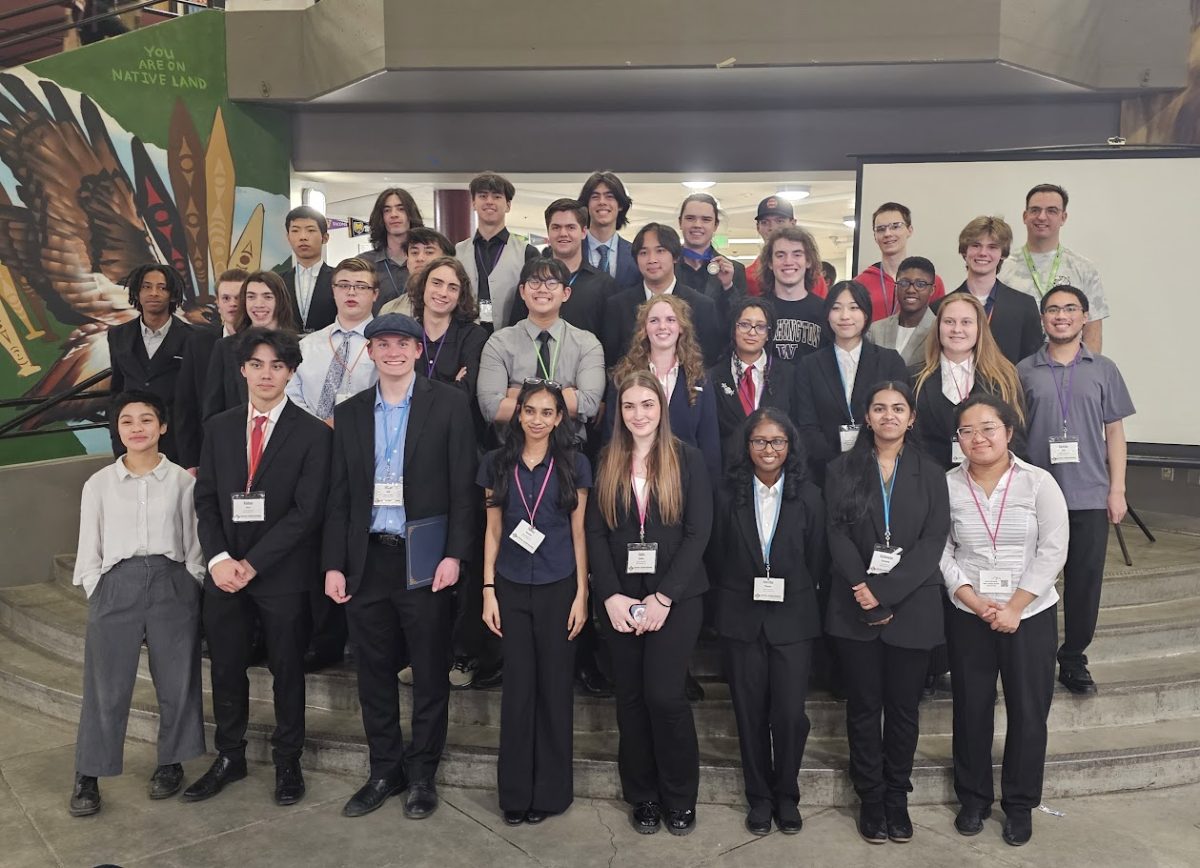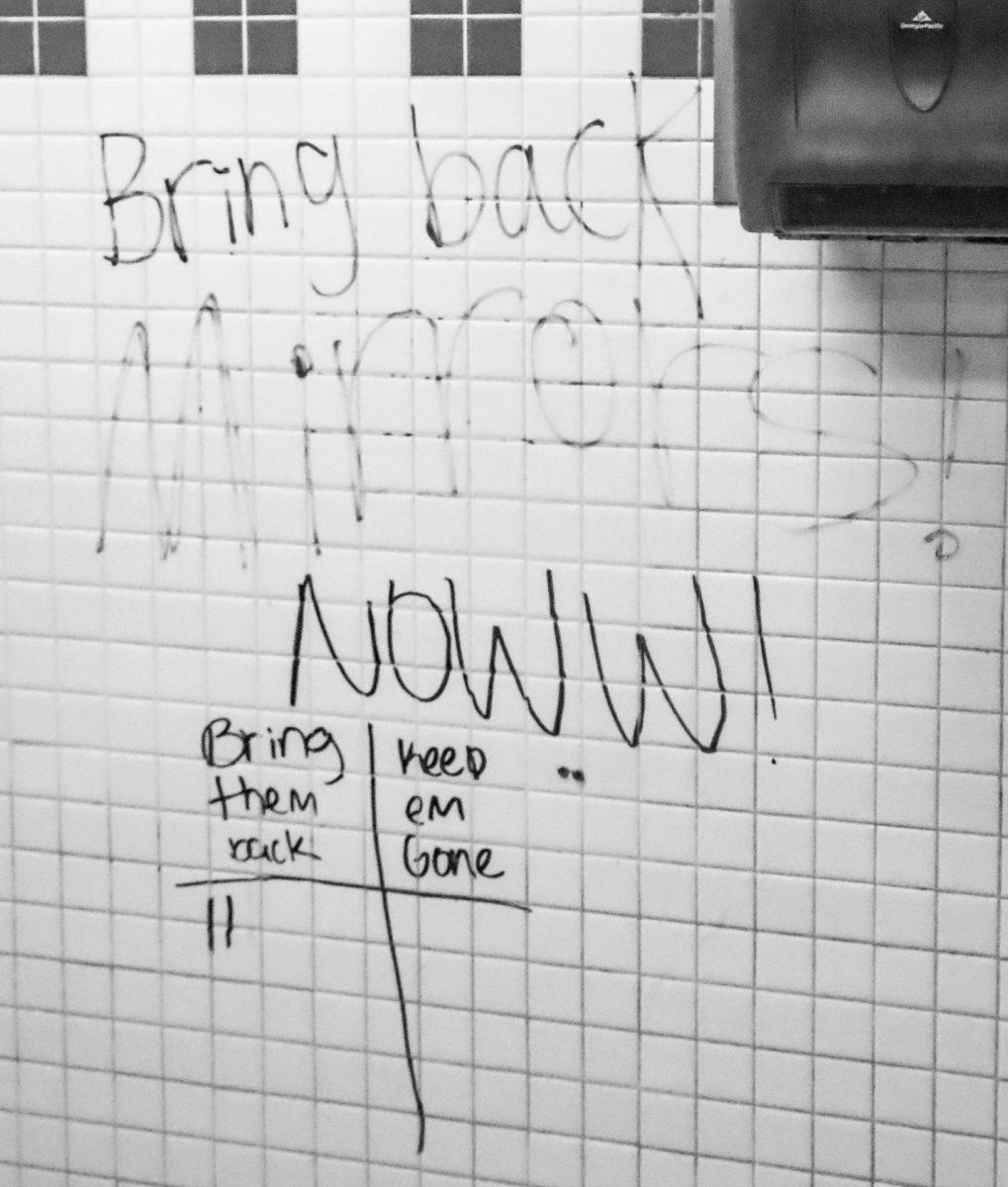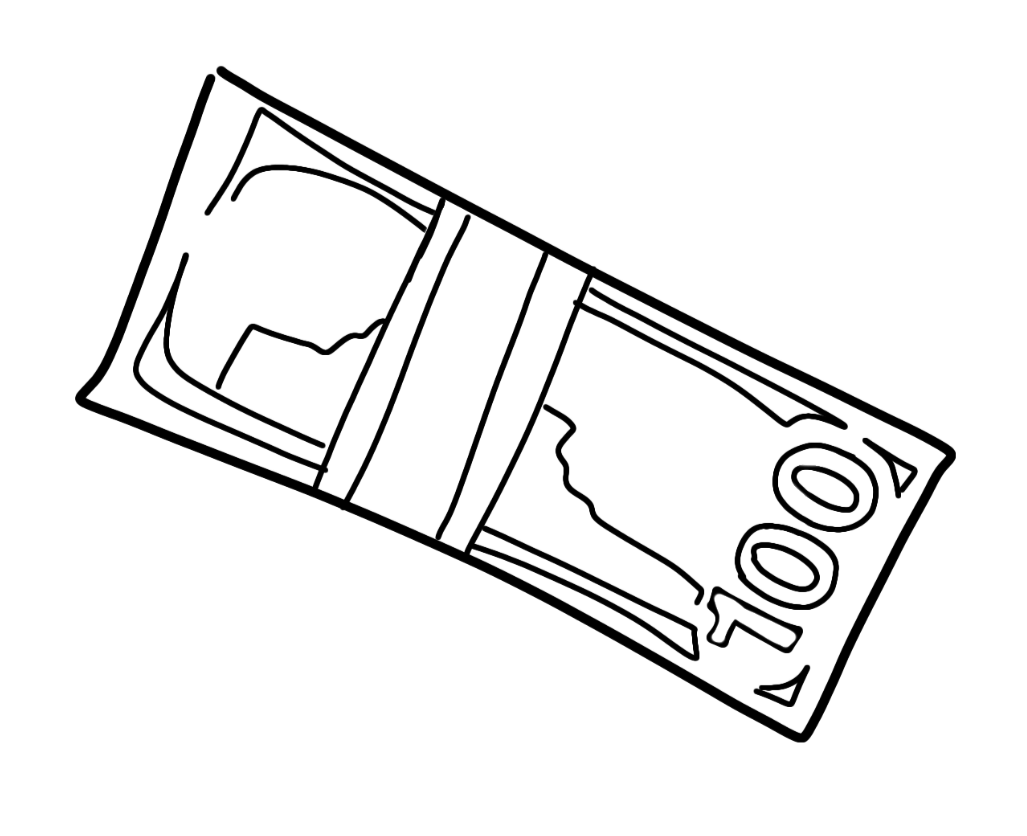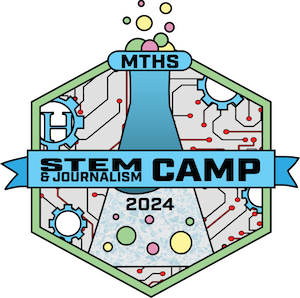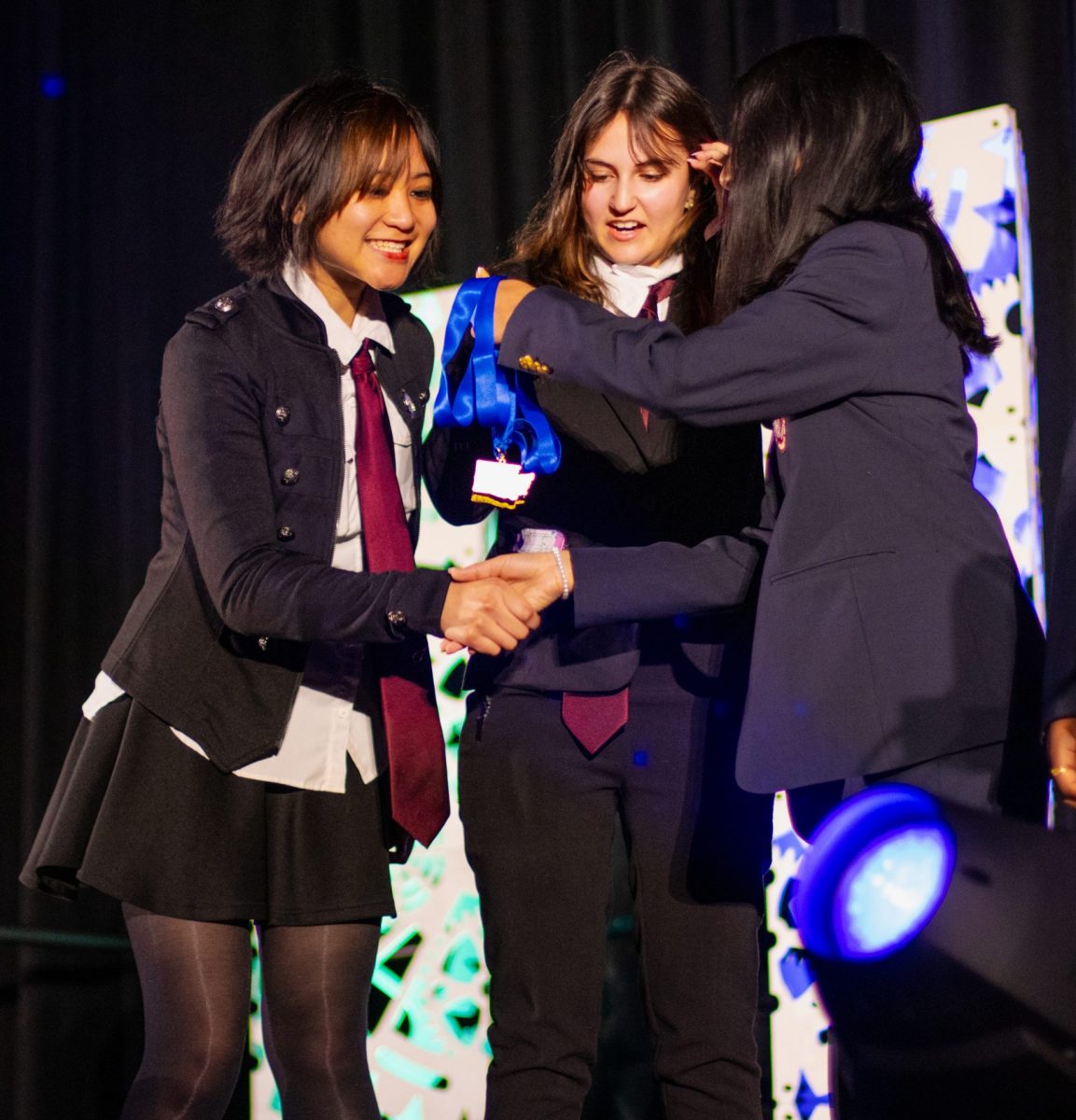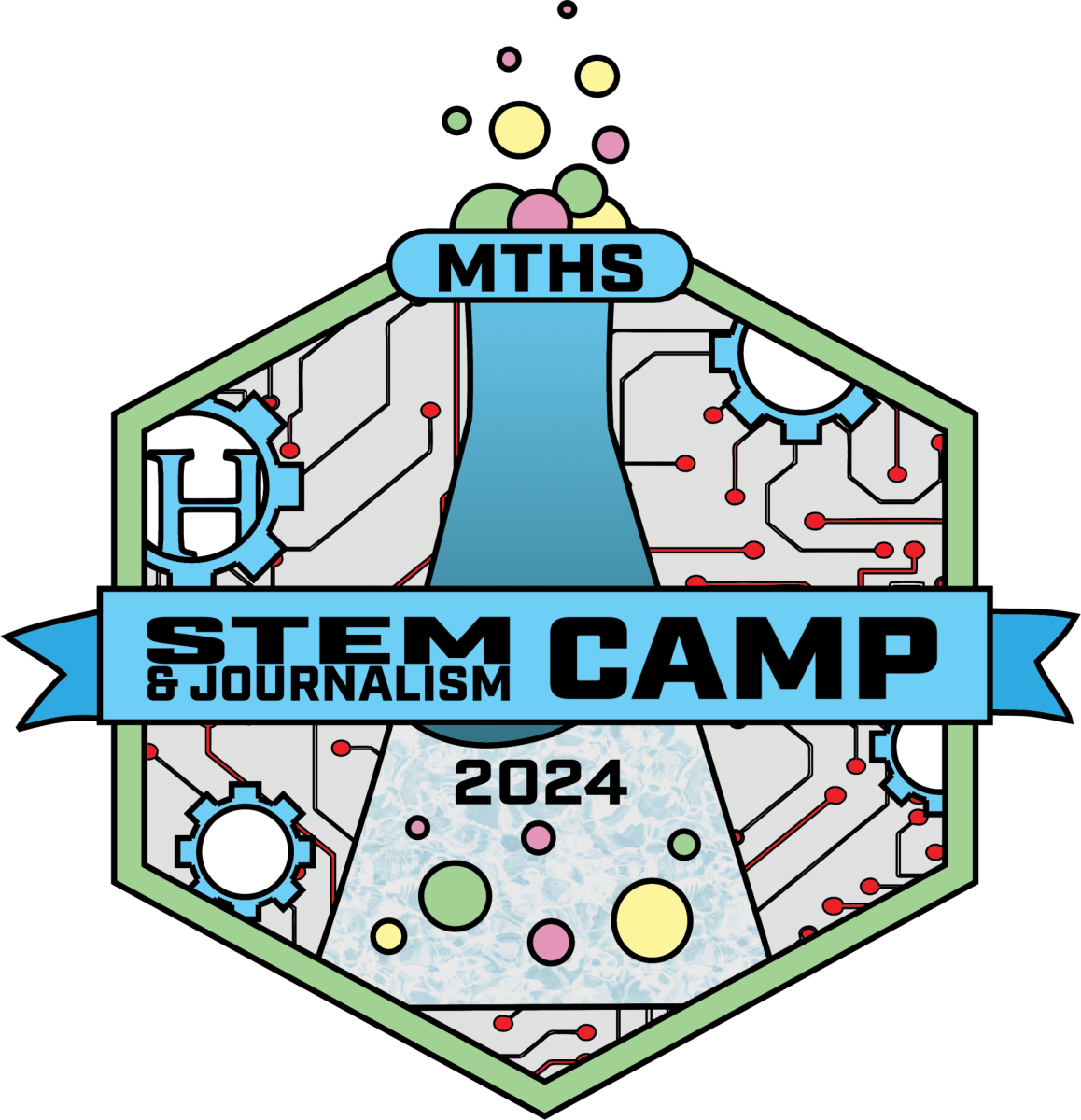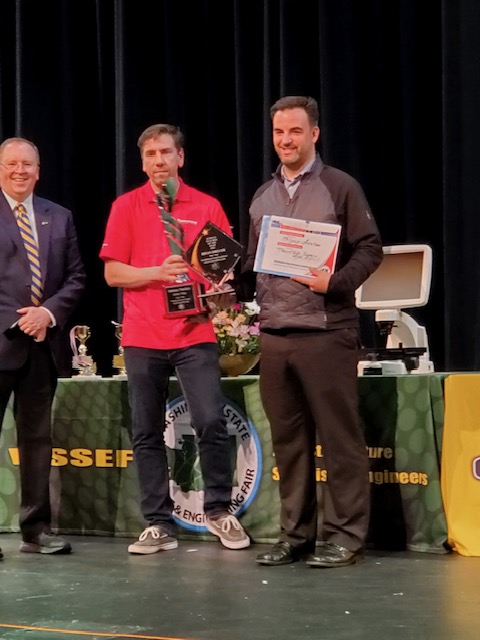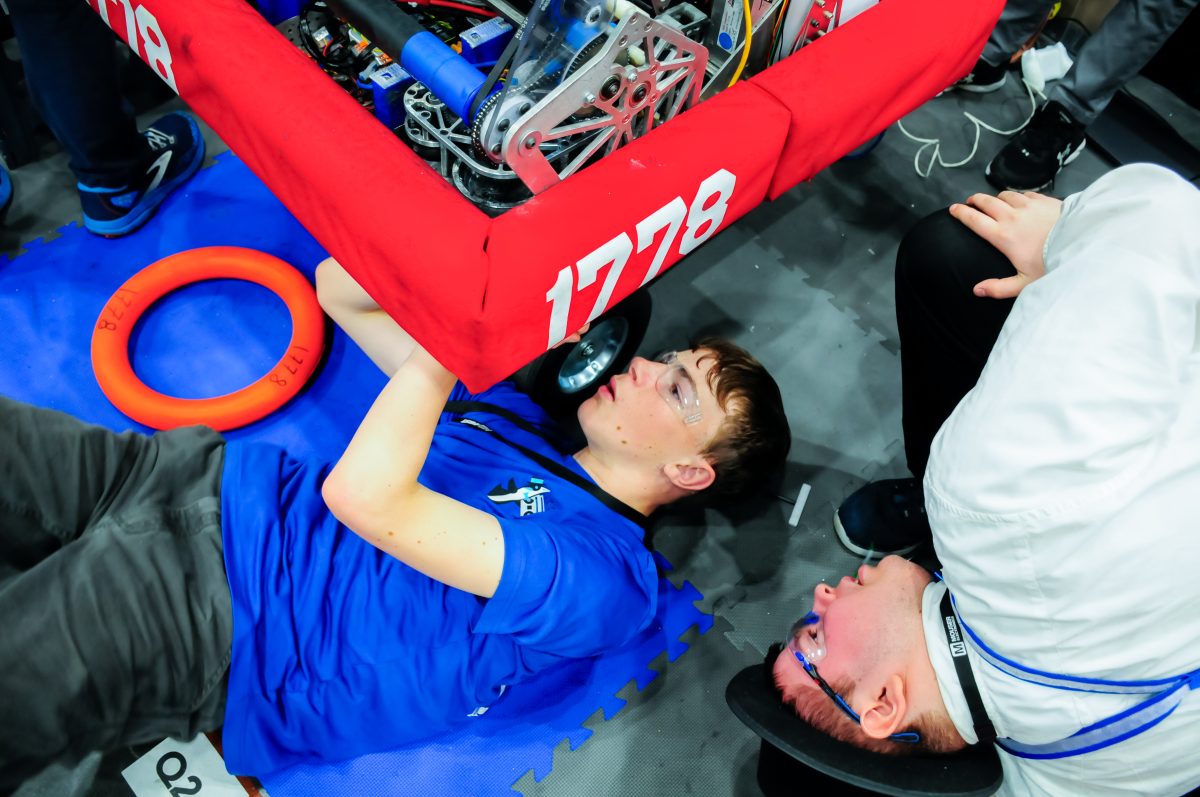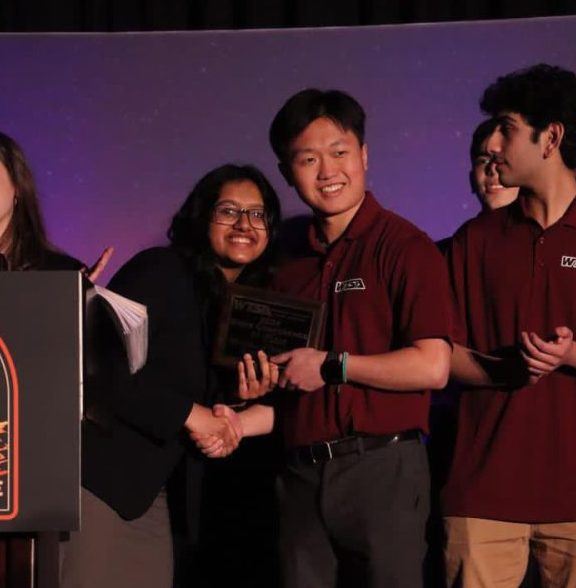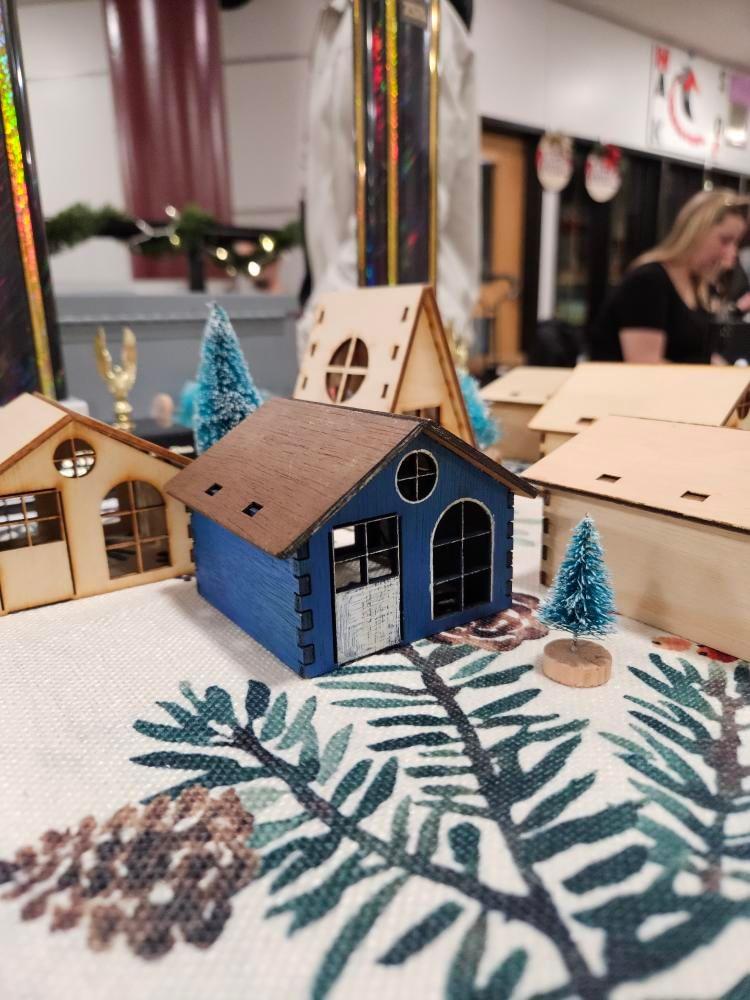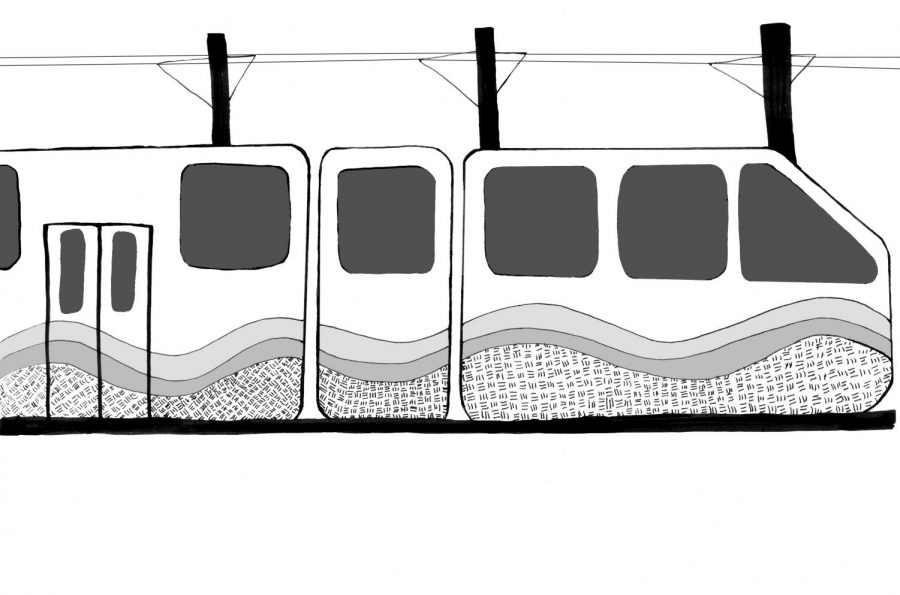On January 6 at 7 a.m., about 1,000 people gathered in the Terraceum for the FIRST Robotics Competition (FRC) kickoff.
Each year, a new FRC challenge is issued, and kickoff is the international time and date when the challenge is released. The only information teams have before kickoff is the name of the challenge. The manual, details and the challenge itself are all released at kickoff. This past Saturday, teams traveled from across the greater Seattle area to MTHS, all to find out what this year’s FRC challenge, FIRST POWER UP, would entail.
Students from the MTHS robotics team, 1778 Chill Out, had been preparing for around a month and arrived at 5:30 a.m. to finish setup. Teams soon began to arrive and the excitement built for the challenge’s reveal.
As they waited for the live stream releasing the challenge to begin, a few students from a mix of teams led everyone in the “Cha Cha Slide.” Dancing to songs reminiscent of an elementary school party is a common occurrence at robotics events; and everyone gets into it.
The stream, live from Manchester, New Hampshire, was welcomed with cheers. It was finally time for the big reveal. The audience’s eyes were locked on the screen. The challenge, FIRST POWER UP, puts the robots in a video game, with the goal being to escape. There are two ways to “escape”: collecting points during game time or getting the robot to climb the tower in the end game to face “the boss”.
While the name is different, the concept is similar to other challenges in the past. Robotics Vice President Eugene Stubert said the concept of power-ups is a new element for the competition.
There are three power-ups in the robotics challenge this year; force, boost and levitate. There are two switches and one scale on the field. Having ownership of them gets an Alliance points. Ownership can be gained by using power cubes to tip the scale, or by using force. Using boost will double points for the scale and/or switch if a team already has ownership. Finally, levitate grants one robot per alliance a climb. A climb completed is when a team is able to lift their robot above two rows of yellow block decals on the bottom of the tower. Levitate excuses one robot from having to actually climb the tower, but grants them points as though they had.
Each power-up can only be used once and only one alliance can use a power-up at a time. Using power-ups give the alliance ranking points, which will help their teams to move up in the competition standing.
There’s a lot of strategy involved. However, much to the disappointment of FRC teams tweeting #askfirstpowerup during kickoff, unlike last year’s challenge, there is no water involved in this year’s challenge. The wait for one of those will continue.
After the challenge was revealed and the manual codes were given out to the students, the coaches and mentors broke off for brainstorming.
This brainstorming session wasn’t exactly what one would expect. Teams didn’t hide away in rooms and whisper so that no one would hear the ideas they were putting together. Instead, all the students were randomly assigned rooms so that brainstorming groups would be mixed. Each classroom had students from several teams working together to start to figure out what they could do to make the best possible robot.
Junior Brenna Mohagen said this how all robotics events work because FRC is a cooperative competition, so the teams help each other out. This idea of cooperative competition, “Coopertition,” stems from one of the most important values of all FIRST competitions, known as “gracious professionalism.” Gracious professionalism is a value FIRST has implemented across all their programs.
FIRST talks about the value on their website saying “…fierce competition and mutual gain are not separate notions. Gracious professionals learn and compete like crazy, but treat one another with respect and kindness in the process.” This key component brings teams from all around the world together in an environment where they are aiming to not only win but also make friends.
The event came to a close as teams had time to socialize while they waited to receive their kit of parts (KOP). The KOP is a starter pack of sorts that teams get to build their robot. Now that the teams have their challenge, new ideas on how to tackle it and a kit to get started, they will begin the six weeks of madness commonly known as build season. Hopefully, the teams can POWER UP and have some winning robots by competition season.




